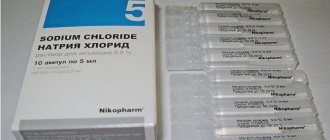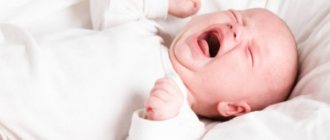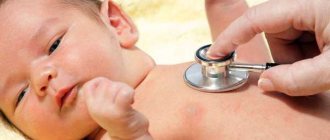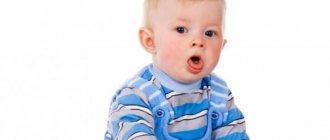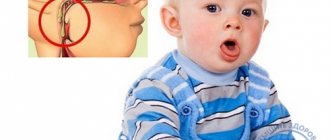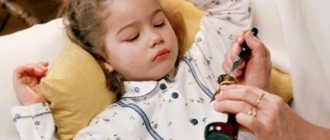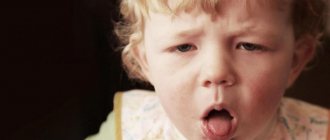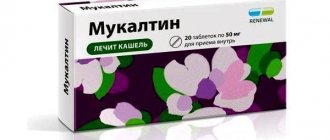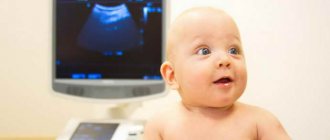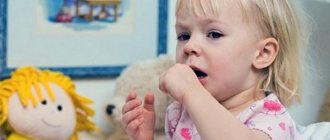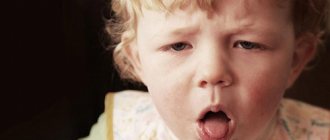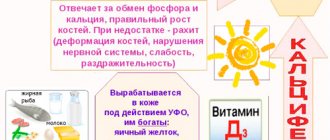How to give inhalation to a child
Inhalation is characterized as the treatment of respiratory diseases by directly administering drugs to inflamed areas of the respiratory system. This method of treatment is considered the fastest, most reliable and safest if you want to cure your child in a short time. For this, nebulizers are needed that allow you to perform the treatment procedure using pure steam, essential oils, potato or herbal decoctions, etc.
In the modern age, there are a huge number of such devices that facilitate the process of inhalation and are used for children of different ages. There are no specific age-related contraindications for this procedure for children (except for newborn infants and one-year-old babies); it is important to persuade the baby so as not to scare him.
When to do it
You will definitely need an inhaler for children to effectively treat respiratory diseases. Diseases that can be treated with inhalations include:
- sinusitis;
- tonsillitis (loss of voice);
- pharyngitis, laryngitis;
- stenosis;
- tracheitis;
- pneumonia;
- bronchial asthma;
- pollen allergy.
Performing inhalation for children must comply with all rules that comply with the following recommendations:
- plan inhalation so that there is a break of at least an hour between food and manipulation;
- when the baby breathes, put him to sleep;
- The duration of the procedure should be no more than three minutes in children;
- An effective course of treatment consists of at least 10 sessions.
Post-inhalation massage for children
After inhalation, you can increase the discharge of sputum in children with the help of massage. To do this, the child is placed on his stomach and the upper part of the chest is tapped with bent fingers in the direction from the center to the sides. These movements alternate with patting and rubbing. Then the baby is turned over on his back and all massage techniques are repeated in the sternum area.
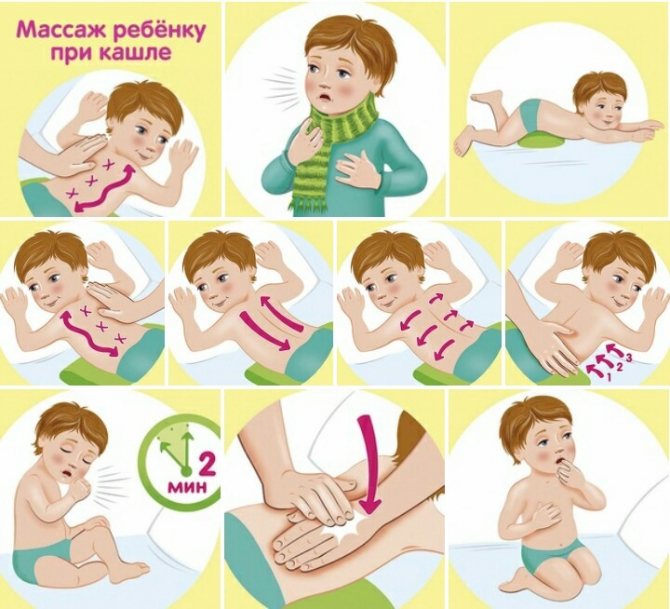
Types of inhalers
Depending on the disease that needs to be treated, there are different types of inhalers. Some of them are aimed at eliminating cough, others help normalize breathing in the nasal sinuses, others are used for sore throat, asthma, etc. There are also universal devices that make it possible to effectively treat diseases at home. Check them out in more detail below.
Nebulizer
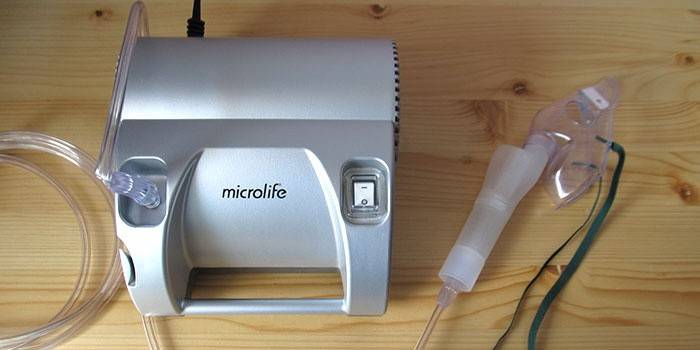
The term “nebulizer” itself comes from “nebula” and literally means fog or cloud. The appearance of this device back in the 18th century was characterized by the transformation of liquid with drugs into an aerosol for inhalation. The difference between a nebulizer and steam devices is that it creates a flow of medicinal microparticles using the aerosol method. Today's pharmacies offer to choose and buy at different prices these electrical devices from the leading ones, "Gamma", "Geyser", "Spacer").
Compressor
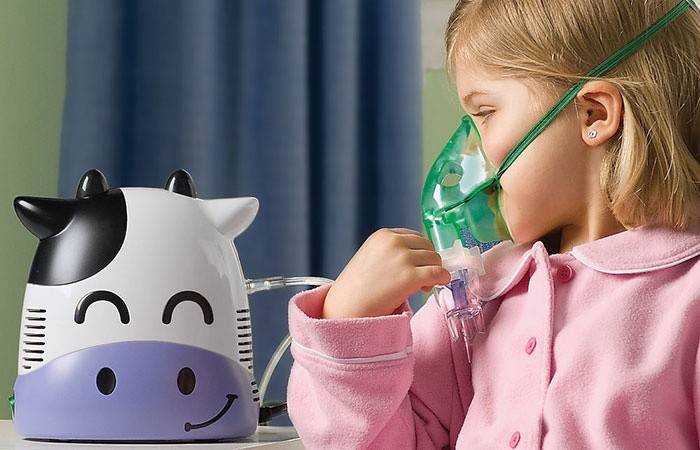
In this case, the air that enters through a narrow opening is subject to low pressure. As a result, the air speed increases, and the liquid from the chamber is also sucked into the low pressure area. Here the medicine begins to interact with the air flow, breaking down into tiny particles, which end up in the most remote areas of the respiratory tract.
In order to somehow attract children to the inhalation process, manufacturers of such equipment try to create an interesting look. This option includes a compressor inhaler called “Locomotive”. It has a beautiful, bright look like a toy locomotive, and is equipped with all the necessary tubes and masks that are used for breathing using different methods. It can be used even by a 4-month-old child.
Ultrasonic
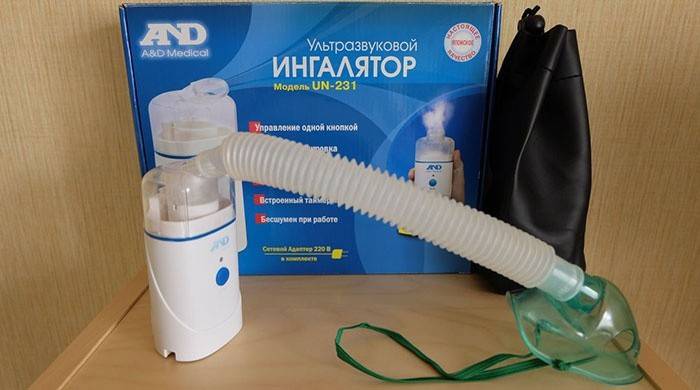
The action of such an immobilizer is based on the influence of the therapeutic liquid by high-frequency ultrasonic waves, resulting in the formation of an inhaler aerosol. However, it is not advisable to use drugs for inhalation in this case, because ultrasonic frequencies destroy high-molecular compounds of antibiotics, mucolytics and other medications. It is better to use herbal decoctions or saline solutions with medicine.
Steam
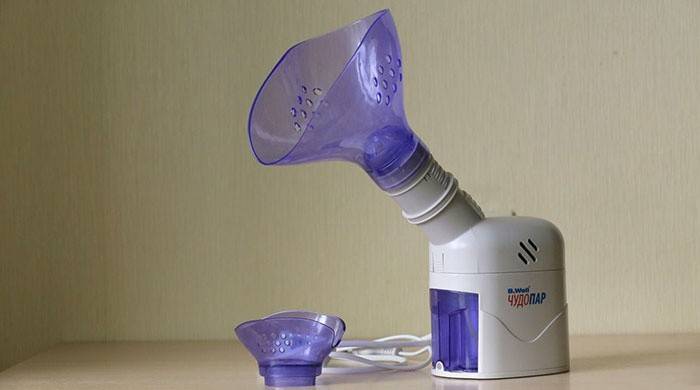
This type of nebulizer is based on the effect of evaporation of volatile solutions of drugs (these are usually essential oils), which have a boiling point below one hundred degrees. However, compared to previous types, the steam inhaler has a number of disadvantages, including the limited use of drugs in very small concentrations, which does not always give the necessary healing effect.
How to care for the device
When treating a child, it is extremely important that after each procedure all removable parts are thoroughly washed. To do this, after turning off the device, remove the mask, nebulizer and connecting tubes. They are first dipped in a soapy solution for half an hour, then thoroughly washed under running water.
At the end of the day, it is recommended to disinfect parts. They are immersed in an antiseptic solution (Lysoformin, Virkon); in their absence, 3% hydrogen peroxide and vinegar solution are used (a tablespoon of 6% vinegar per 0.5 cup of water).
We recommend reading the article about what can be put into a nebulizer. From it you will learn what drugs are used in a nebulizer, what an inhaler helps with, what to use for inhalation, and how to do it if you don’t have a nebulizer at home. And here is more information about inhalations for sputum removal.
Inhalations for children under one year of age are recommended through a nebulizer. Choose a compressor-type device or a MESH inhaler. For steam treatment, a container with a hot decoction of herbs is placed near the crib. All types of therapy must be prescribed by a pediatrician.
Solution for inhalation
To effectively use any inhalation for children, you need not just water, it is important to prepare special solutions. They are created on the basis of various medications, the list of which is compiled by a doctor for intensive care. These could be bronchial medications, antibiotics, expectorants or solutions with soda. Find out what inhalations are done in a nebulizer next.
Bronchodilators
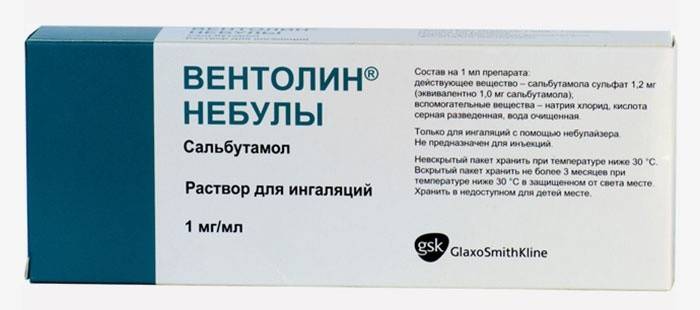
These medications are designed to treat the bronchi. The maximum effect of bronchodilators is achieved by delivering small particles to the bronchi using inhalation procedures. These include the following inhibitors:
- "Ventolin Nebula"
- Composition: salbutamol as the main component, which creates a medicinal effect.
- Indications: prescribed by doctors for bronchial asthma, as well as for chronic lung disease.
- Application: the suspension is used in pure form, 2.5 ml each, or diluted with Sodium Chloride. The procedure should last no more than 10 minutes, and the permissible frequency daily is up to 4 times.
- "Berotek"
- Ingredients: fenoterol, which effectively relieves asthma attacks.
- Indications. This medicine is necessary for use as a prevention or treatment of asthma and chronic lung disease.
- Application: inhalation for young children (up to 6 years old), take 20-25 drops of Berotek and drop directly into the inhaler.
Mucolytics
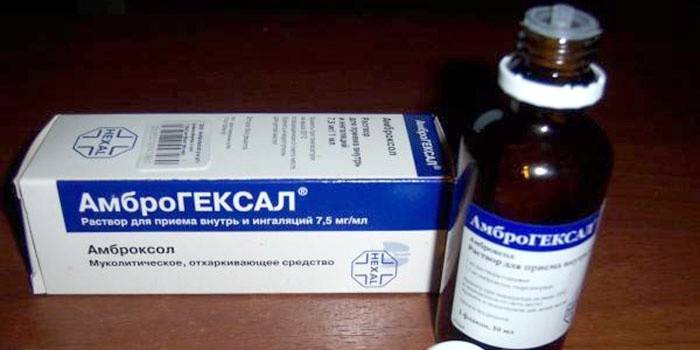
This type of medication is an expectorant that thins mucus. With the help of inhalations with mucolytics, doctors effectively combat severe coughs of any origin. These drugs effectively relieve swelling of the mucous membranes and thin even highly viscous sputum. Here's what you can do inhalations with:
"Ambrobene" or its analogues: "Ambroxol", "Ambrohexal":
- Ingredients: main ingredient – ambroxol;
- Indications: intended for the treatment of acute or chronic diseases of the respiratory system.
- Application: it is not recommended to use with medications called: “Falimint”, “Pectusin”, “Bronholitin”, “Sinekod”, others. Dilute 2 ml of syrup with saline solution one to one. Perform the procedure twice a day.
Antibiotics
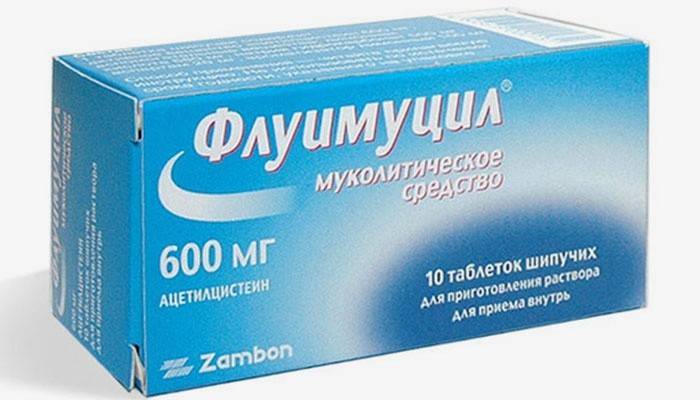
Without an antibacterial drug, it is impossible to cure a long-standing respiratory disease (more than 10 days). Such medications help prevent infection from penetrating into the deep sections of the bronchi and have broad-spectrum antimicrobial properties. Among antibiotics, the following drug is often used during inhalation.
"Fluimucil":
- Ingredients: acetylcysteine (the same “ACC”), thiamphenicol.
- Indications: enhances the effect of mucolytics.
- Application: use 2 ml of the prepared solution (125 mg of medication with 125 ml of saline solution).
Alkaline
Alkali-based solutions intensively help thin sputum and purulent discharge from the nasopharynx. This inhalation method is considered a simple and effective means. It treats diseases of the respiratory system. To carry out the procedure with mineral water, use “Borjomi” or “Essentuki” as follows:
- Heat half a liter of mineral water in a kettle to (45 degrees);
- inhale steam through the spout with your mouth and exhale through your nose;
- the duration of the process is 8 minutes, and the number of repetitions per day is up to 4 times;
Features of using a nebulizer in infants
A nebulizer for infants is used for inhalation therapy; its features include:
- the presence of a special mask for a newborn, covering the baby’s nose and mouth;
- the procedure takes place in the mother’s arms or while lying in the crib;
- the session should not last more than 3 minutes, so the maximum volume that can be poured is 2 ml;
- To dilute the medicine, you only need a sterile saline solution, and for preparation, disposable syringes; all preparations are carried out in compliance with sterile conditions;
- it is important to always prepare a fresh solution before the procedure and check the labeling on the ampoule, bottle, and expiration date;
- the diluted drug is preheated to body temperature, since when sprayed with a compressor it cools and can cause reflex bronchospasm;
- If the child has had a session with hormones, then immediately after the inhalation is completed, they are given clean water to drink and the face is washed.
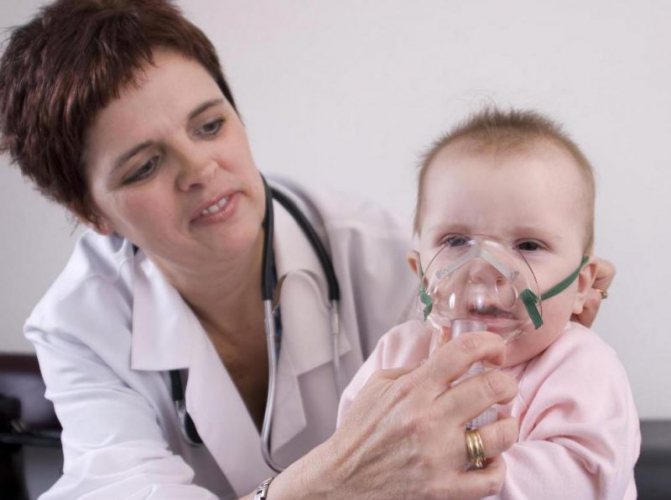
Rules of procedure
Inhalation treatment for infants is carried out in compliance with the following rules:
- one hour after feeding;
- half an hour before you need to offer to drink water;
- 1-4 sessions are performed per day, with a break between procedures of at least 4 hours (the exception is a combined regimen: a bronchodilator, an expectorant and an antimicrobial);
- the last inhalation is carried out no later than 1.5-2 hours before bedtime, so that there is time for coughing up sputum;
- after inhalation, exclude feeding, walking and active movements for 1.5-2 hours.
Watch this video about how to perform inhalations in infants:
Which device is suitable for a one-month-old baby, 6 months, one year old?
For a small child, it is best to choose a compressor-type nebulizer, but if there is a chronic disease from birth to 6 months or a year, the best option is a MESH-type inhaler. Such portable nebulizers allow you to carry out procedures in a lying position, you can take them with you, and you do not need to have a power source nearby to operate.
Ultrasound machines do not spray hormones and antibiotics, so they are not always suitable for newborns.
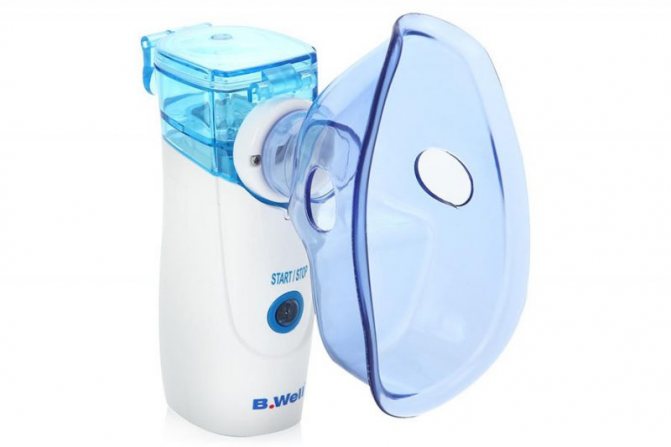
MESH nebulizer
What to do with inhalations
Depending on what disease you want to treat, taking into account the presence of certain symptoms, there are different medications that are used for preparing inhalations. For a nebulizer, you can prepare solutions, inhaling the vapors of which will effectively treat diseases such as snot, wet or dry cough, sinusitis, asthma, sore throat, flu, ARVI, and other diseases. Learn further what to do with nebulizer inhalations.
With a runny nose
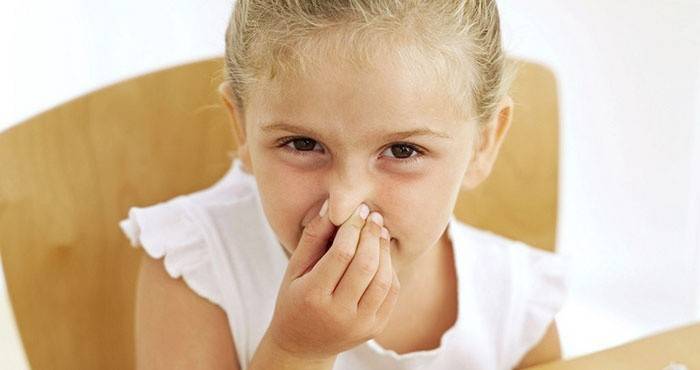
To effectively treat a runny nose and relieve nasal congestion, use specialized solutions for inhalation called “Sinupret”, “Naphthyzin”, “Epinephrine” (“Adrenaline”). Also effective: “Zvezdochka”, “Pinosol”, “Rotokan”. Find out how to prepare inhalations for a runny nose:
- Eucalyptus or fir oil: dilute 14 drops of ether in 0.2 liters of saline solution. For each procedure, fill the nebulizer for a runny nose with 3 ml of the resulting solution, repeating the procedure per day up to 4 times a day.
- “Sodium Chloride”: pour an ampoule with 4 ml of the drug into a nebulizer, treat the tube with “Chlorhexidine”, breathe for up to five minutes. It must be done at least three times a day.
For bronchitis and dry cough
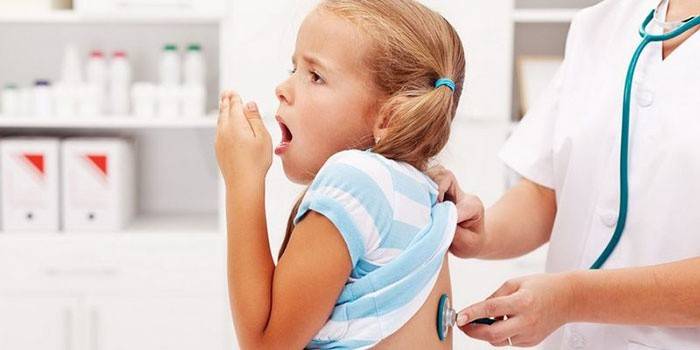
When bronchitis or a long dry cough takes you by surprise, inhalations with expectorants (Mukaltin, Lazolvan) and mukalytics will help you. They also use antitussives (“Ledocaine”, “Tussamag”) and herbal remedies. The following medicines are used for cough:
- Berodual
- Ingredients: fenoterol, bromide.
- Indications: used for the treatment of chronic obstructive respiratory diseases.
- Application: prepare Berodual for children with saline solution (2 drops each), fill the nebulizer when coughing - breathe.
- Lazolvan
- Composition: main component – ambroxol.
- indications: for acute and chronic diseases with viscous, thick sputum;
- application: dilute 2 ml of the medicine with 2 ml of saline solution, do the procedure by adding 3 ml of the prepared solution, repeating the procedure up to 4 times a day.
- "Pulmicort"
- Composition: main substance – budesonide.
- Indications: chronic lung diseases, acute inflammatory diseases.
- Application: dilute 1 mg of medication with 2 ml of saline solution, use 3 ml of the mixture for the procedure, four repetitions per day.
For sinusitis
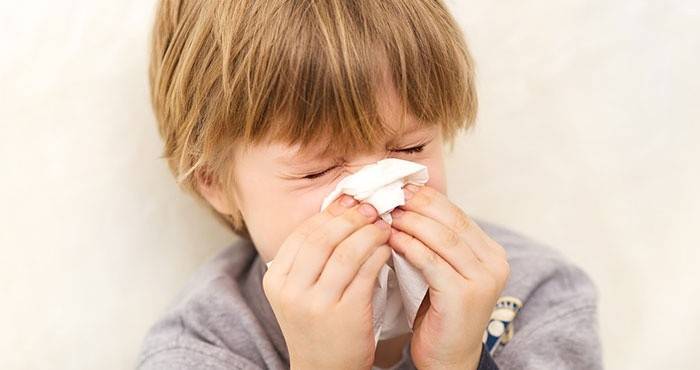
To ease the course of the disease and speed up the recovery process, children with sinusitis cannot do without inhalations. Here, vasoconstrictor drugs are needed to relieve inflammation in the nose and make breathing easier. In this case, inhalations with:
- "Dekasan." It is an antiseptic and disinfectant with antiviral activity. Has reviews of a strong drug.
- Ingredients: decamethoxin.
- Indications: used during purulent-inflammatory diseases (tonsillitis, sore throat, sinusitis, inflammation of the adenoids).
- Application: dilute 2 ml of the medicine with 2 ml of saline solution, use 3 ml of the resulting mixture for the procedure three times a day.
- Saline solution. Dilute 3 g of sea salt in 10 ml of saline solution, use the finished mixture in 3 ml doses for 10-minute procedures several times a day.
- Essential oils: mix a drop of rosemary, thyme and mint, dissolve in 2 ml of saline solution, perform the procedure for about 20 minutes three times a day.
At a temperature
You should always remember that during fever, it is better to avoid inhalation procedures altogether. However, there are situations where the use of a nebulizer is possible. For example, a child has an acute illness and in order to maintain the effect of therapy, inhalation sessions cannot be canceled. However, if the temperature rises above 37.5, then any procedures prescribed even by doctors must be canceled.
For asthma
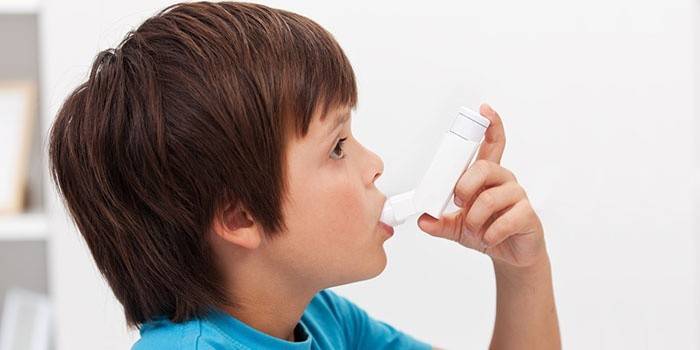
To treat asthma using inhalation, use medications that dilate the bronchi (Berotec, Salbutamol, Flixotide Nebula, Eufillin), thin mucus (Lazolvan for inhalation, Mukolvan), antibiotics (Septomirin ", "Dioxidin", "Gentamicin", "Metrogil", "Miramistin"). Hormonal medications (Hydrocortisone, Prednisolone), antihistamines (Dexamethasone, Cromohexal), and drugs to enhance immunity (Derinat, Interferon, Laferobion, Cycloferon) will also help. Prepare solutions using these medications.
Find out more about how to choose an asthma inhaler.
Is inhalation possible for children under one year old, at what age?
Inhalations can be performed on children up to one year old; the first procedures can be performed as early as 1-2 weeks after birth. This need arises in congenital diseases of the lungs and bronchi (for example, cystic fibrosis, bronchospasm). Inhalation therapy for a child under two months of age is carried out only for special indications:
- for dilation of the bronchi or administration of hormones in severe bronchial asthma;
- with a viral infection with an attack of suffocation (false croup);
- cystic fibrosis with impaired formation of the protective mucous layer (surfactant).
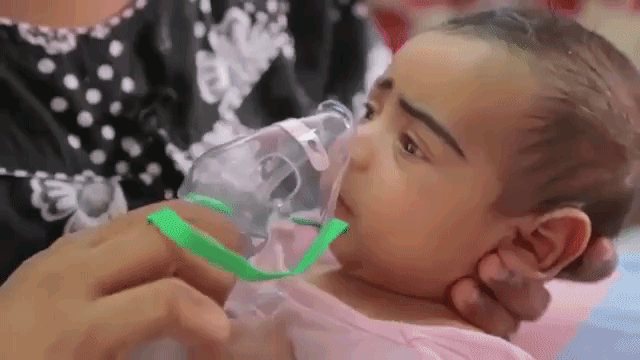
At three months and 4 months of age, procedures may be prescribed to moisturize the respiratory tract (soda, salt inhalations and saline), dilute and remove sputum (Lazolvan, Ambrobene). The doctor may also recommend antiviral drugs (Interferon) and immune stimulants (Derinat).
Inhalation can be carried out with equal success on a one-year-old and a 5-month-old child; the difference will only be in the dosages of medications, so treatment is always prescribed and monitored by a pediatrician. An important condition is that the use of hot procedures is contraindicated for children under 2 years of age due to the risk of burns to the respiratory tract.
We recommend reading the article on how to do inhalations with a nebulizer. From the article you will learn how to breathe correctly when inhaling with a nebulizer, as well as when you should not inhale with a nebulizer for a child or an adult. And here is more information about how to choose an inhaler for a child.
When can a child be treated?
Inhalations can be used to treat a child with the following diseases:
- acute inflammation of the nasopharynx (rhinitis, pharyngitis, sore throat);
- damage to the upper respiratory tract (laryngitis, tracheitis);
- acute or exacerbation of chronic inflammatory processes in the bronchi - non-obstructive and obstructive bronchitis, bronchial asthma;
- pneumonia;
- fungal infections of the upper and lower respiratory tract;
- cystic fibrosis;
- false croup in acute viral infection.
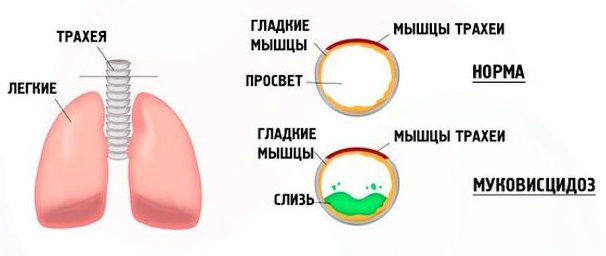
Contraindications
Inhalations are not given to a child if:
- elevated body temperature;
- the appearance of streaks or traces of blood in sputum and nasal mucus;
- heart defects with severe shortness of breath;
- convulsive syndrome.
It is forbidden to use drugs without first testing, as allergic reactions are possible. This rule is mandatory in the presence of any type of drug intolerance, food allergies, diathesis, or bronchial asthma. Signs that the medication is not suitable for your child may include:
- cough, sneezing;
- worsening breathing through the nose or an attack of shortness of breath;
- itchy skin, rash.
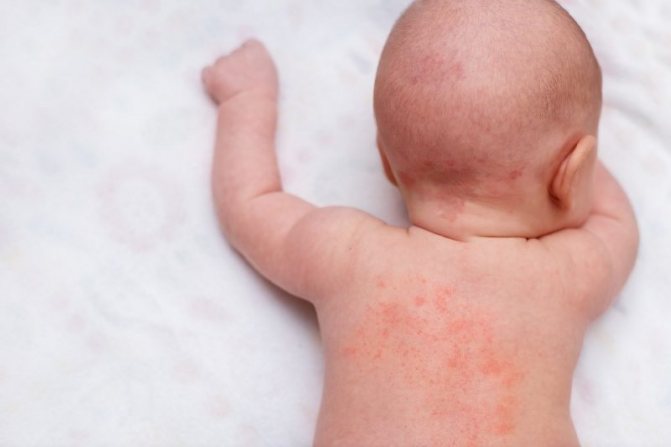
Any of these symptoms requires the abolition of inhalations, and in case of paroxysmal coughing or choking, you need to call an ambulance.
Nebulizer Recipes
There are recipes for inhalations that have a wide spectrum of action during respiratory diseases. Drugs such as Tonzilgon, Propolis, and Calendula can be used here. Use them to ease the course of the disease, improve your general condition, and speed up your recovery. To learn how to prepare such solutions for inhalation, read the instructions below.
- With "Chlorophyllipt", necessary components and application:
- 1 ml of alcohol (one percent) tincture of chlorophyll from eucalyptus leaves;
- saline solution (10 ml);
- mix everything, use a dose of 3 ml of the prepared solution for each 20-minute procedure;
- apply at least three times a day.
- With “Tonsilgon” (a homeopathic remedy based on horsetail, chamomile, dandelion, yarrow, marshmallow, walnut):
- 2 ml of the medicine should be added to the same amount of saline;
- The nebulizer needs to be refilled with 4 ml of the prepared mixture;
- Duration: up to 10 minutes, repeated up to four times a day.
- With Propolis:
- Dilute 1 ml of medicine in 20 ml of saline solution;
- apply 3 ml for each procedure three times a day.
- With "Furacilin":
- Dilute one tablet of the drug in 100 ml of saline solution;
- Use 4 ml of diluted medicine up to two times a day.
- With Calendula:
- Dilute 1 ml of alcoholic infusion of inflorescence extract in 40 ml of saline solution;
- pour 4 ml of the mixture into the nebulizer and perform the procedure a couple of times every day until complete recovery.
Inhalations at home
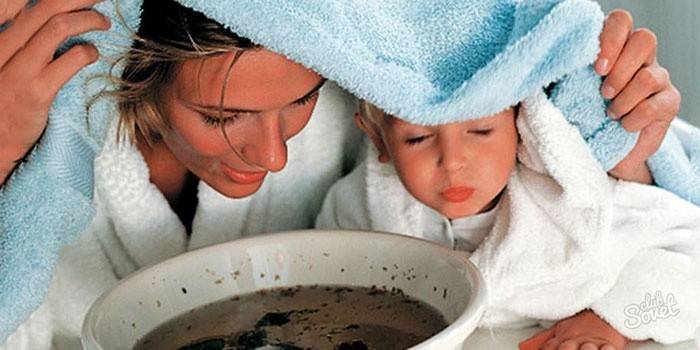
If you don’t know what to do with inhalation for a cough or runny nose, the procedure can be performed using methods without using a nebulizer. To do this, use improvised means that are available at home, for example, garlic or potatoes. You can also do inhalations using herbal solutions. Just take the necessary ingredients, boil and breathe over a steaming pan with ready-made traditional medicines.
- Recipe with garlic: boil finely chopped 6 cloves of garlic for about five minutes, breathe over the steam.
- Proportions for herbal inhalation: take a teaspoon of dried eucalyptus, sage, finely chopped garlic, a validol tablet, a quarter of a briquette with pine extract, boil, inhale the vapors.
- Boil two potatoes in their skins, breathe over the pan until it cools down.
Video
Before performing inhalations at home using folk remedies or using nebulizers, consult a therapist so that he carefully examines the child, makes the correct diagnosis, and only then, according to his instructions, use breathing exercises. Next, watch the videos that describe the correct procedure for children.
Doctor Komarovsky
Known in many countries, Dr. Komarovsky will always tell you how to act correctly in any situation when your baby is sick. By watching the video attached below with the recommendations of this pediatrician, you will learn what is allowed and prohibited to do during various respiratory diseases and how to properly use inhalations for therapy.

Inhalations – School of Dr. Komarovsky
